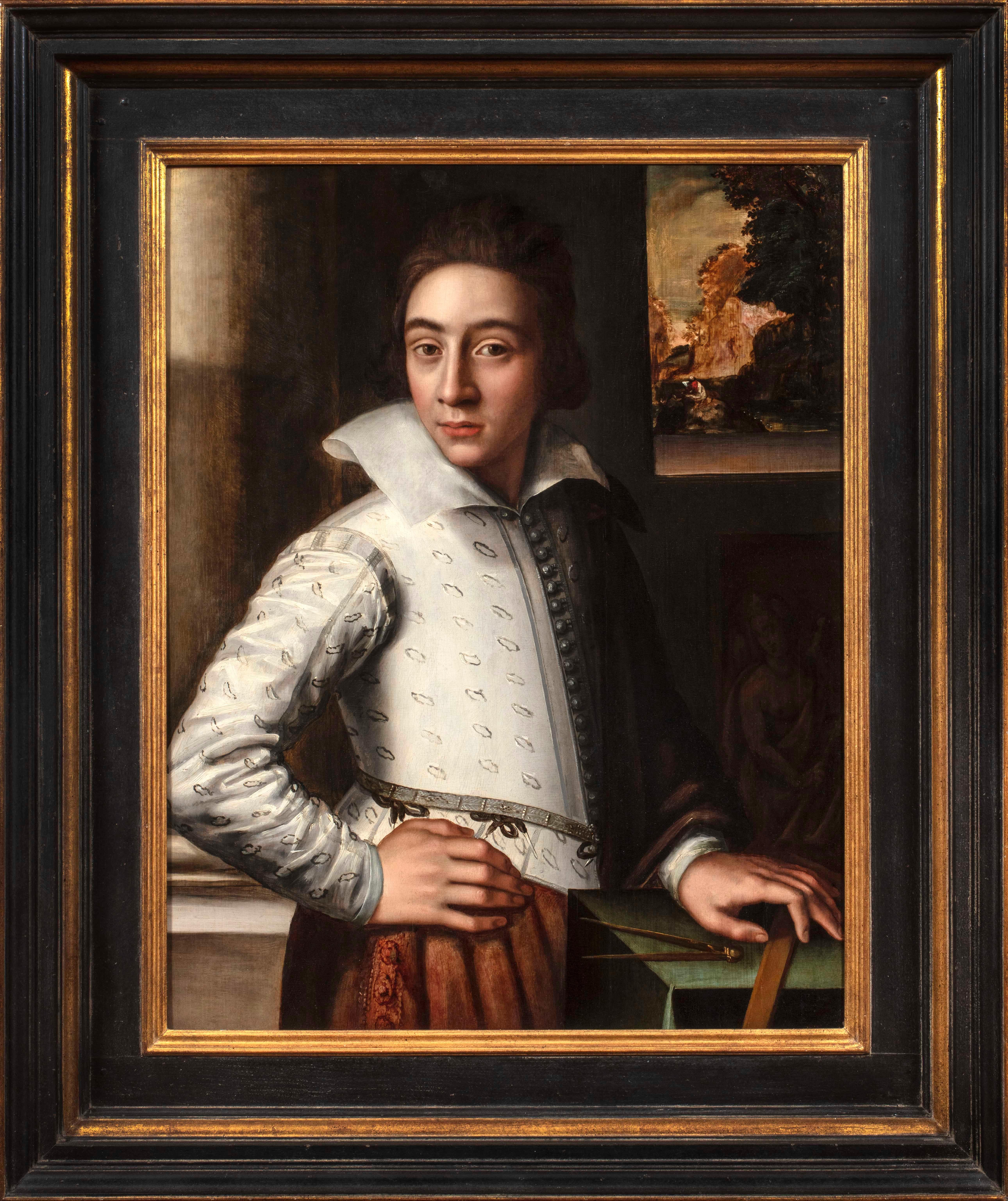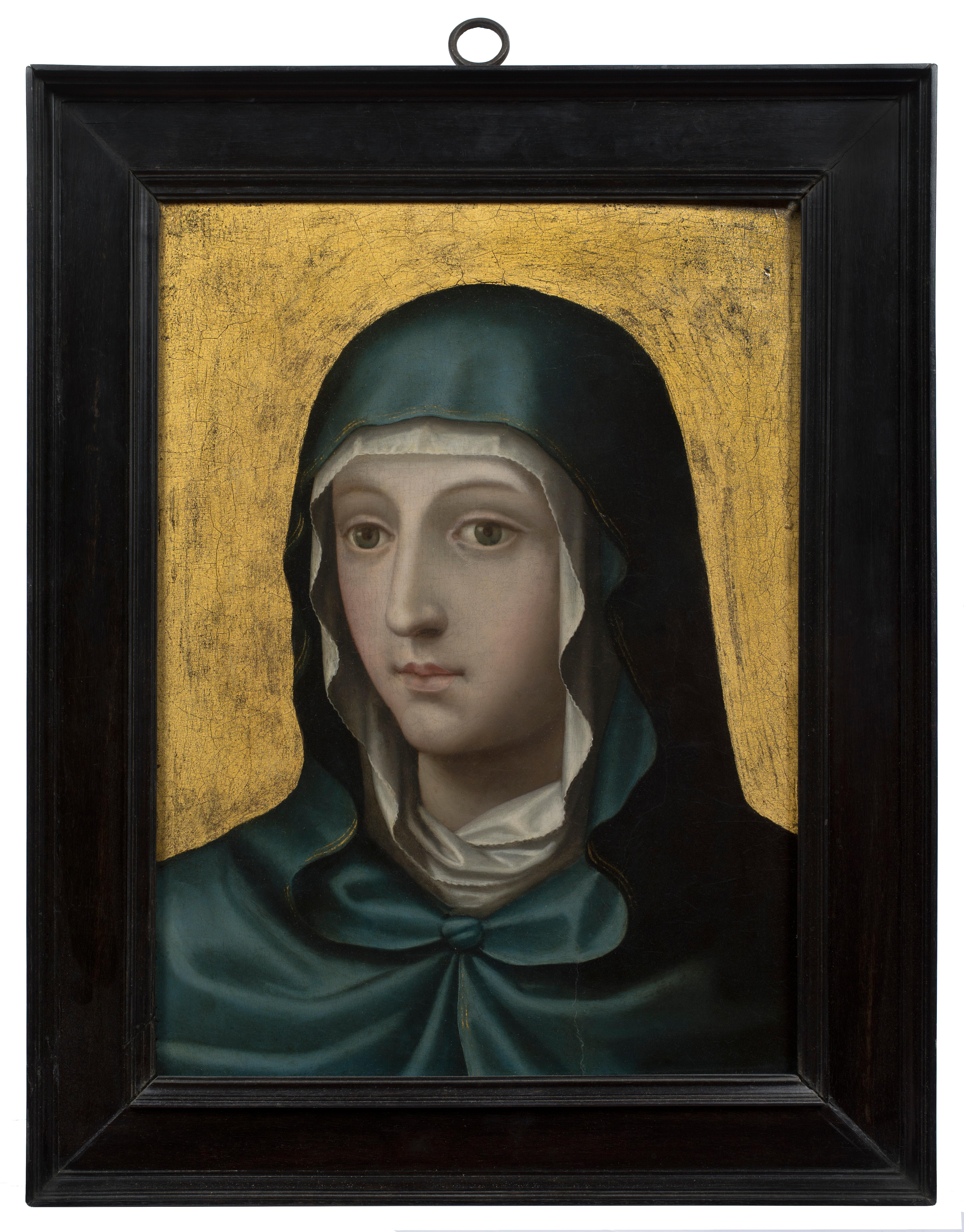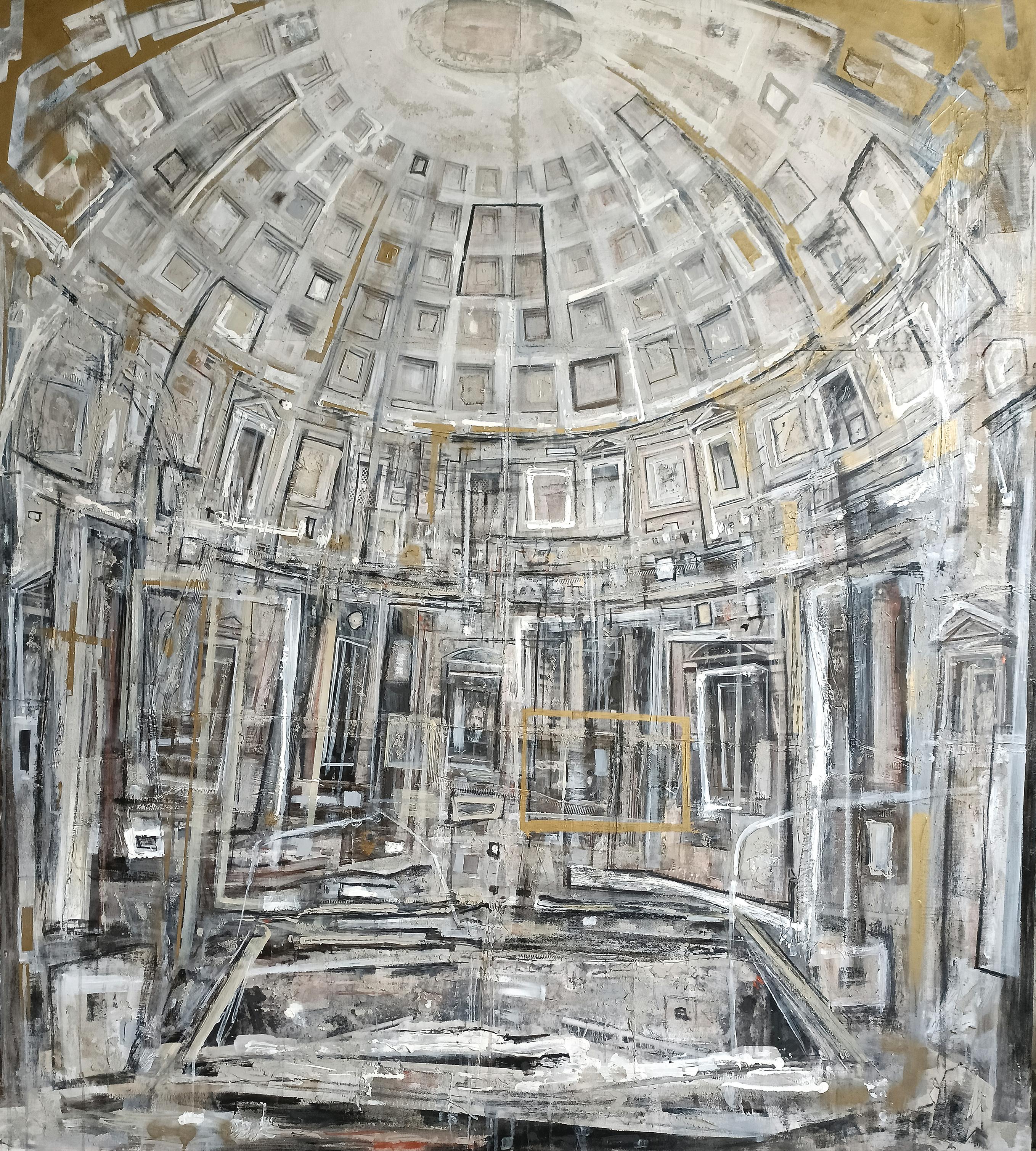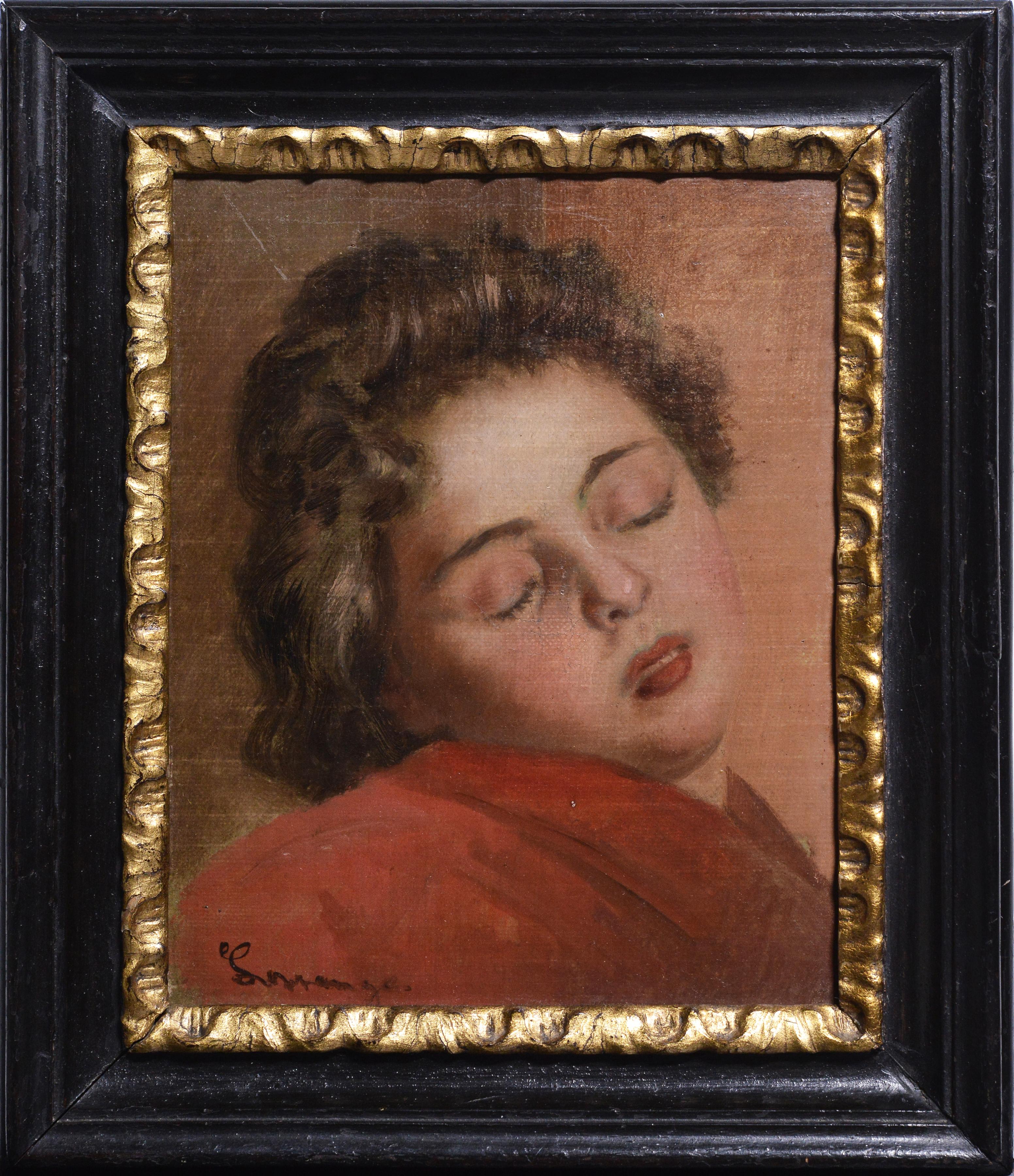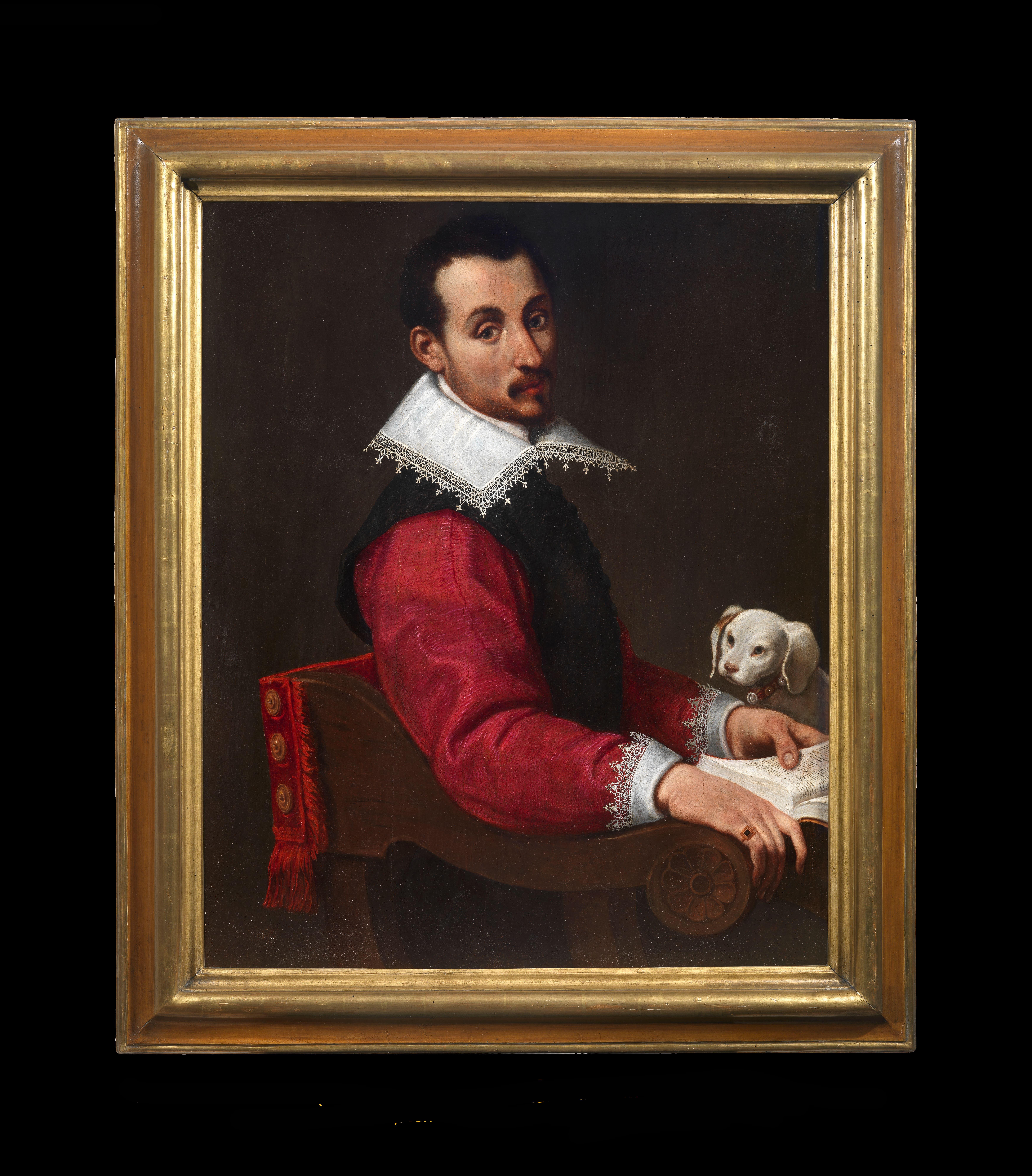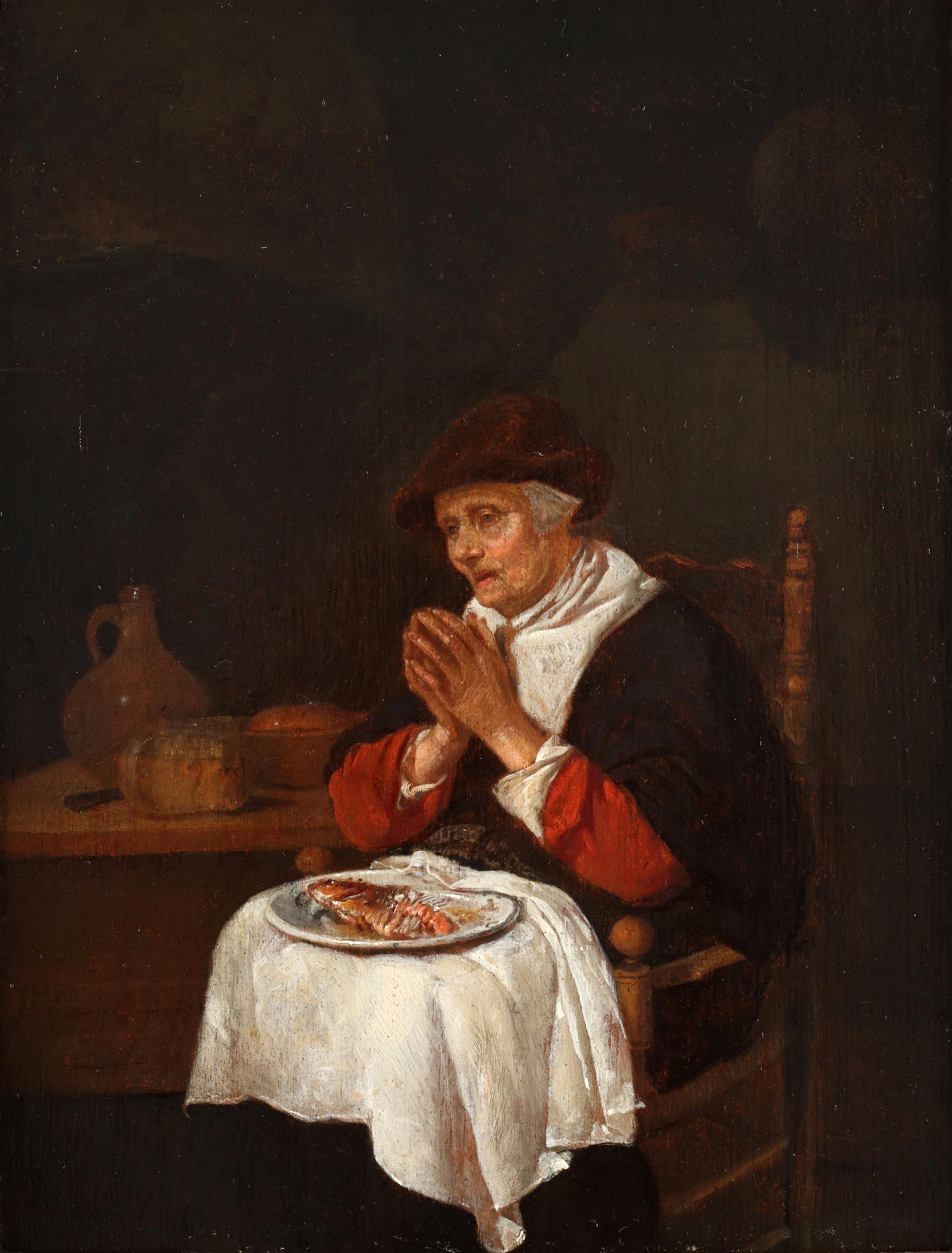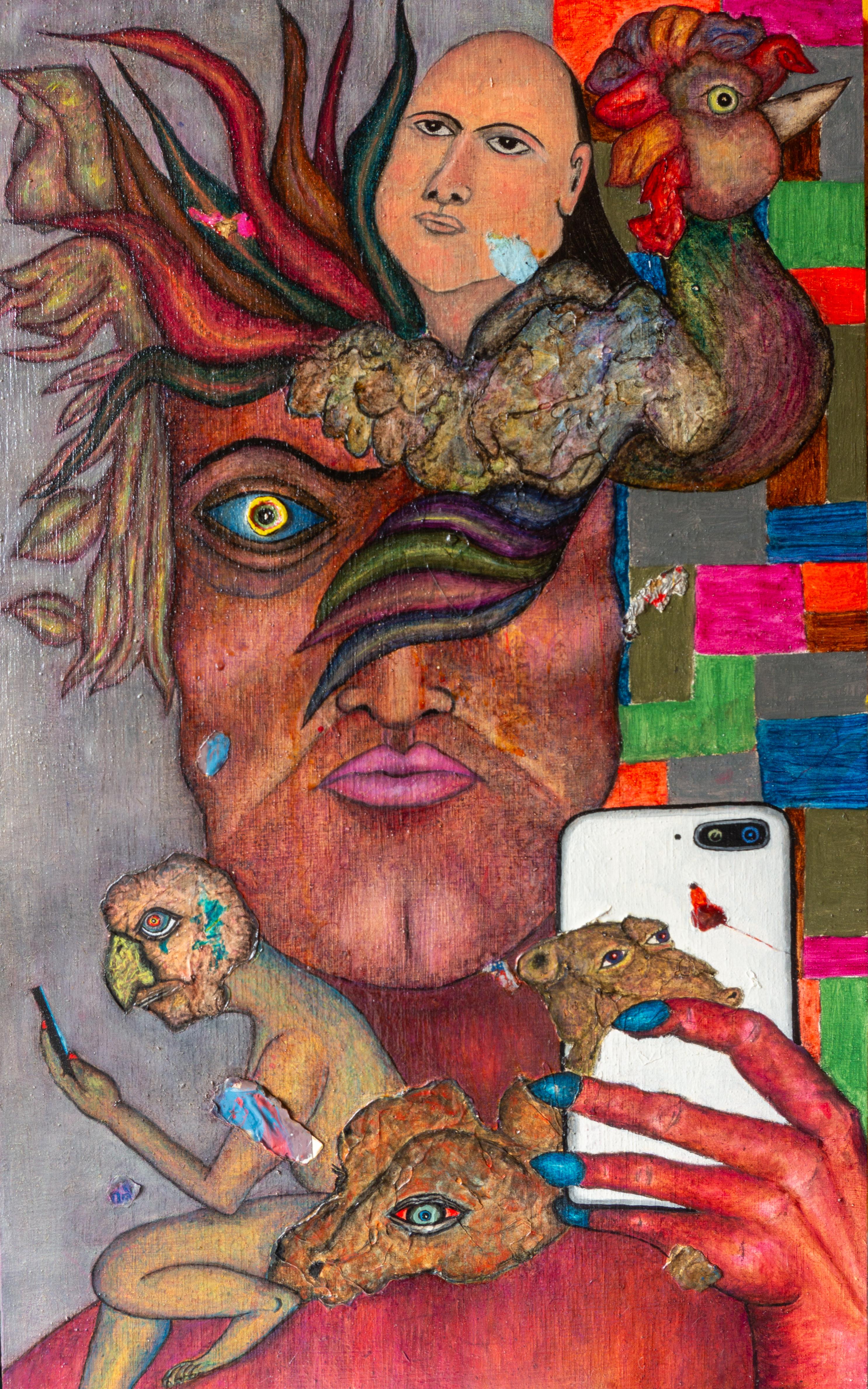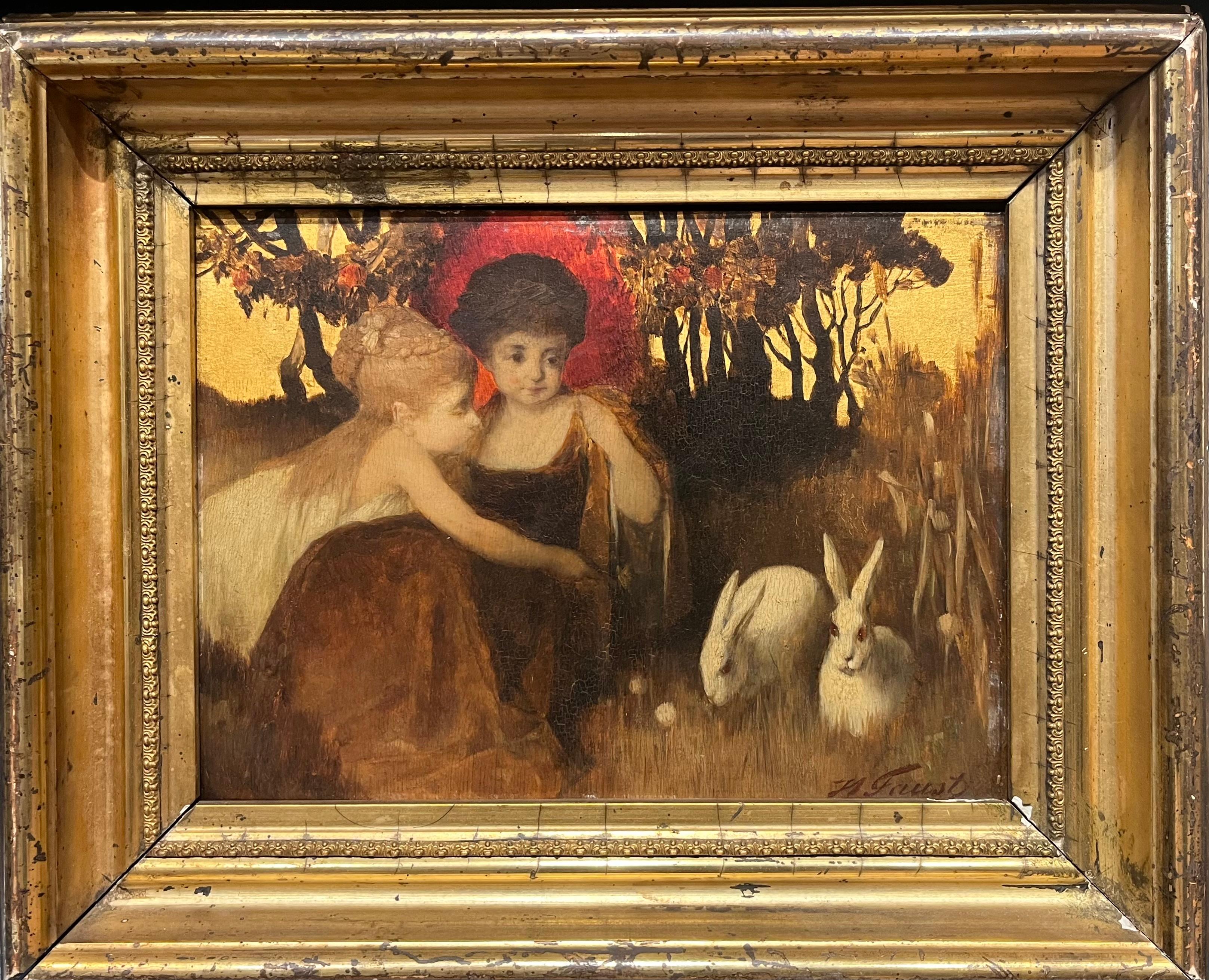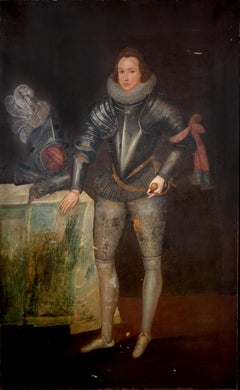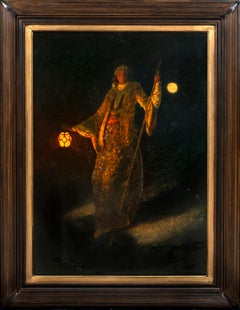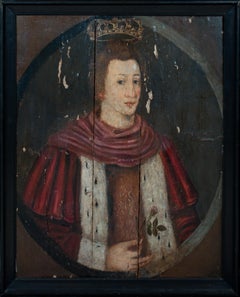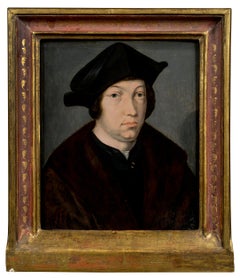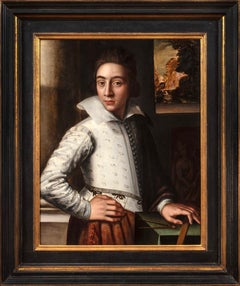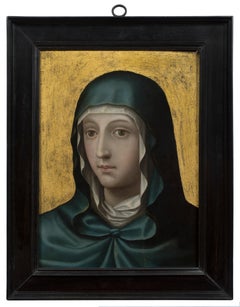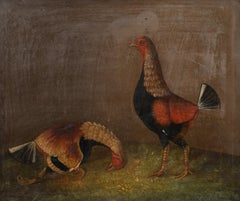
Victory, 19th Century
View Similar Items
Want more images or videos?
Request additional images or videos from the seller
1 of 10
UnknownVictory, 19th Century
About the Item
- Dimensions:Height: 15 in (38.1 cm)Width: 20 in (50.8 cm)
- Medium:
- Period:
- Condition:
- Gallery Location:Blackwater, GB
- Reference Number:Seller: 7832951stDibs: LU157728676582
About the Seller
4.8
Platinum Seller
These expertly vetted sellers are 1stDibs' most experienced sellers and are rated highest by our customers.
Established in 2008
1stDibs seller since 2021
197 sales on 1stDibs
Typical response time: 1 hour
More From This SellerView All
- Portrait Of Baron Dudley North, 16th Century English SchoolLocated in Blackwater, GBPortrait Of Baron Dudley North, 16th Century English School Huge 16th Century Portrait of Dudley North, 3rd Baron North, attired for an Accession Day Tilt with a favour, traditiona...Category
16th Century Portrait Paintings
MaterialsOil, Panel
- By The Light Of The Lantern, 19th Century European Oreintalist SchoolLocated in Blackwater, GBBy The Light Of The Lantern, 19th Century European Oreintalist School Large 19th Century European Orientalist portrait of a woman at night illuminated by her lantern, oil on panel....Category
19th Century Portrait Paintings
MaterialsPanel, Oil
- Portrait Of King Edward VI (1537-1553) as Prince Of Wales, 16th CenturyLocated in Blackwater, GBPortrait Of King Edward VI (1537-1553) as Prince Of Wales, 16th Century English School - Oil on panel - circa 1547 Large 16th Century portrait of Edward VI as Prince Of Wales, oil...Category
16th Century Portrait Paintings
MaterialsWood Panel, Oil
- "Fritz" A French Sheepdog, dated 1897, ParisBy René Francois Xavier PrinetLocated in Blackwater, GB"Fritz" A French Sheepdog, dated 1897, Paris Portrait Rene-Xavier Prinet (1861-1946) sales to $105,000 19th century portrait of a French sheepdog, o...Category
Late 19th Century Portrait Paintings
MaterialsOil, Panel
- Portrait Of Elizabeth Percy, Countess of Northumberland (1646-1690) 17th CenturyBy Daniel MytensLocated in Blackwater, GBPortrait Of Elizabeth Percy, Countess of Northumberland (1646-1690), 17th Century Studio of Jan MYTENS (1640-1670) Large 17th portrait of Elizabeth Percy Countess of Northumberlan...Category
17th Century Portrait Paintings
MaterialsWood Panel, Oil
- King Solomon Worshipping The Idols, 17th Century FRANS FRANCKEN II (1581-1642)By Frans Francken IILocated in Blackwater, GBKing Solomon Worshipping The Idols, 17th Century FRANS FRANCKEN II (1581-1642) - signed sales to $6,000,000 Large 17th Century biblical account of King Solomon worshipping the Idols, oil on panel Frans Francken. Excellent quality and condition Old Testament biblical scene on a cradled panel depicting the Idolatry of Solomon, son and successor of King David. Exceptional detail and would be enhanced with a light clean. Presented in an antique period frame. Signed. Measurements: 47" x 34" framed approx Artist Biography Frans Francken II or the Younger is the third in order of descent in the Francken family tree. Born in 1581, the son of Frans Francken I or the Elder, he was the brother of Thomas, born in 1574, of Hieronymous II, born in 1578 and died in 1623, and of Ambrosius II, the last in line, who died in 1632. Hieronymous II, who died at the age of 56, is only known for his painting Horatius Cocles at Sublicius Bridge. Frans the Younger was initially a pupil of his father, who was then at the height of his career. In his father's studio he imbibed all the teaching of the tradition of Frans Floris. He also spent long periods in Italy, where he familiarised himself in particular with the masters of the Venetian school. Such study in situ enabled him to break away from the well-worn methods of Flemish Italianism, as practised by his father and uncles. It is conceivable that the young artist met Rubens, who was in Italy at the time. In 1605, at the age of 24, on his return to Antwerp, Frans the Younger became a master in the Antwerp Guild of St Luke. In 1607 he married Elisabeth Placquet in Antwerp. Three sons and eight daughters resulted from this marriage. His children made up the fourth generation in the dynasty. Better known are Frans III (1607-1667) and Hieronymus, born in 1611. The latter had a son, Constantinus (1661-1717), who marks the end of the line. The family of Francken painters runs from 1520 to 1717. As one of the most active masters in Antwerp, Frans II was appointed dean of the guild in 1614. He was also a member of the Violette, a major literary association, for which he painted an award-winning symbolic coat of arms. He was intimate with the most celebrated artists, in particular van Dyck, who executed a very fine portrait of him, judging by the engraving by Willem Hondius and Pieter de Jode. It is also likely that he was on familiar terms with Rubens who was his near contemporary. He died in Antwerp on 6 May 1642 at the age of 61, outlived by both Rubens and van Dyck. The first securely dated work of Frans the Younger is Christ on the Cross from the gallery in Vienna, painted in 1606. Witches' Sabbath (Vienna) and The Works of Mercy (Antwerp) are dated 1607 and 1608 respectively. In these two latter works the painter proves himself adept at painting figures and allegorical scenes. The Works of Mercy represents various groups of figures, symbolising the different activities inspired by Christian charity. Paupers and beggars occupy the foreground, the ensemble being dominated by the figure of the glorious Christ. While Frans the Younger cannot be compared with the masters of this great first generation of Antwerp, which was illuminated and steered by the genius of Rubens, he does nevertheless merit attention. He succeeded in developing and bringing into fashion an anecdotal genre on a more modest scale, elements of which were to inform the last representatives of the Francken family for over a century. Frans the Younger was undoubtedly the most talented draughtsman in the family. While his art may be criticised for its lack of grandeur and solemnity, the execution shows great talent. His brush stroke was vigorous and his imagination, albeit restrained, was brilliant. His interest in tonal values was highlighted by his study and appreciation of his remarkable contemporaries. This enabled him to carry out landscapes and also fleshy figures, which made him altogether worthy of the brilliant period to which he belonged. While detail certainly preoccupied him, he treated it with intelligence and even esprit, as witnessed in The Parable of the Prodigal Son and A Prince's Visit to the Treasury of a Church(both in the Louvre). The scenes painted in grisaille, which surround the principal motif of the Prodigal Son, are characteristic of his style. He excelled in painting jewellery, ornaments, and textiles with shot silk effects. A large number of his figures inhabit the neutral backgrounds of the interiors of apartments and galleries. He carried out such work not only under his own auspices, but also for other artists, such as Peeter Neeffs, van Bassen, Josse de Momper...Category
17th Century Portrait Paintings
MaterialsWood Panel, Oil
You May Also Like
- Portrait of a ManLocated in New York, NYProvenance: with Leo Blumenreich and Julius Böhler, Munich, 1924 Dr. Frederic Goldstein Oppenheimer (1881-1963), San Antonio, Texas; by whom given to: Abraham M. Adler, New York, un...Category
16th Century Old Masters Portrait Paintings
MaterialsOil, Panel
$52,500 - Portrait of an Artist (possibly a Self-Portrait)Located in New York, NYProvenance: Bradley Collection. Private Collection, Upperville, Virginia. Literature: Katlijne van der Stighelen and Hans Vlieghe, Rubens: Portraits of Unidentified and Newly Identified Sitters painted in Antwerp, Corpus Rubenianum Ludwig Burchard, vol. 19, pt. 3, London and Turnhout, 2021, under cat. no. 189, p. 161, and fig. 75. This painting had previously been considered to be by an anonymous Tuscan painter of the sixteenth century in the orbit of Agnolo Bronzino. While the painting does in fact demonstrate a striking formal and compositional similarity to Bronzino’s portraits—compare the nearly identical pose of Bronzino’s Portrait of a Young Man in the Metropolitan Museum of Art (Fig. 1)—its style is completely foreign to Italian works of the period. That it is painted on an oak panel is further indication of its non-Italian origin. This portrait can in fact be confidently attributed to the Antwerp artist Huybrecht Beuckelaer. Huybrecht, the brother of Joachim Beuckelaer, has only recently been identified as the author of a distinct body of work formerly grouped under the name of the “Monogrammist HB.” In recent studies by Kreidl, Wolters, and Bruyn his remarkable career has been delineated: from its beginnings with Joachim in the workshop of Pieter Aertsen; to his evident travels to Italy where, it has been suggested, he came into contact with Bronzino’s paintings; to his return to Antwerp, where he seems to have assisted Anthonis Mor in painting costume in portraits; to his independent work in Antwerp (where he entered the Guild of Saint Luke in 1579); and, later to his career in England where, known as “Master Hubberd,” he was patronized by the Earl of Leicester. Our painting was recently published by Dr. Katlijne van der Stighelen and Dr. Hans Vlieghe in a volume of the Corpus Rubenianum, in which they write that the painting “has a very Italian air about it and fits convincingly within [Beuckelaer’s] oeuvre.” Stighelen and Vlieghe compare the painting with Peter Paul Ruben’s early Portrait of a Man, Possibly an Architect or Geographer in the Metropolitan Museum of Art, in which the sitter holds a compass and wears a similarly styled doublet (Fig. 2). Huybrecht both outlived and travelled further afield than his brother Joachim, who made his career primarily in Antwerp. Whereas Joachim was the main artistic inheritor of their uncle and teacher, Pieter Aertson, working in similar style and format as a specialist in large-scale genre and still-life paintings, Huybrecht clearly specialized as a painter of portraits and was greatly influenced by the foreign artists and works he encountered on his travels. His peripatetic life and his distinctly individual hand undoubtedly contributed to the fact his career and artistic output have only recently been rediscovered and reconstructed. His periods abroad seem to have overlapped with the mature phase of his brother Joachim’s career, who enrolled in the Antwerp Guild of Saint Luke much earlier than his brother, establishing himself as an independent painter in 1560. Joachim’s activity was confined to the following decade and half, and his latest work dates from the last year of his life, 1574. Our portrait was likely produced in the late 1560s, a dating supported by the dendrochronological investigation performed by Dr. Peter Klein, which established that it is painted on an oak panel with an earliest felling date of 1558 and with a fabrication date of ca. 1566. This painting presents a portrait of an artist, almost certainly Huybrecht’s self-portrait. The young sitter is confidently posed in a striking patterned white doublet with a wide collar and an abundance of buttons. He stands with his right arm akimbo, his exaggerated hands both a trademark of Huybrecht and his brother Joachim’s art, as well as a possible reference to the “hand of the artist.” The figure peers out of the painting, interacting intimately and directly with the viewer, as we witness him posed in an interior, the tools and results of his craft visible nearby. He holds a square or ruler in his left hand, while a drawing compass...Category
16th Century Old Masters Paintings
MaterialsOil, Panel
- The Veronica of the Virgin (Verónica de la Virgen)Located in New York, NYThe panel has been attributed both to Joan de Joanes and his son Vicente Macip Comes (Valencia, ca. 1555 – 1623). Provenance: Private Collection, England, by 1886 (according to stencils on the reverse) Private Collection, New Jersey, until 2010 The Veil of Veronica, often called the Sudarium, is one of the most important and well-known relics of Christ. According to legend, Veronica offered Christ her veil as he carried the cross to his crucifixion. He wiped his face with the veil, which left the cloth miraculously imprinted with his image. Depictions of Christ’s face on a veil, or simply images that focused in on Christ’s face, were treasured objects of religious devotion. The popularity of this format also inspired similar images of the face of the Virgin. The iconographic type of the present painting is known as the Veronica of the Virgin, which was especially favored in late medieval and early Renaissance Spain. Distinct from the images of the suffering Christ, the Veronica of the Virgin is based on the legend that Saint Luke painted a portrait of Mary from life. Although scholars have sometimes mistaken them for portraits of Queen Isabella I of Castile (known as Isabel la Católica) or as a depiction of Saint Maria Toribia (known as María de la Cabeza, or, Mary of the Head), paintings like this one were clearly intended as images of the Virgin in the style of Saint Luke’s lost portrait. The Veronica of the Virgin was especially popular in Valencia, and depictions of this subject produced there all stem back to one visual prototype: a Byzantine image in the city’s cathedral (Fig. 1). This early treatment of the Veronica was given to the cathedral in 1437 by Martin the Humane, King of Aragon and Valencia, who promoted religious veneration of the Veronica of the Virgin as part of the celebration of the Immaculate Conception of Mary. This devotion spread throughout Martin’s kingdom and particularly took hold in Valencia, where the Byzantine image resided. The image, which is displayed in a gold reliquary...Category
16th Century Old Masters Paintings
MaterialsOil, Wood Panel
- 18th Century Venetian School Portrait of a Bishop Oil on Panel Green Brown BlackLocated in Sanremo, ITPainting oil on panel measuring 40 x 30 cm without frame and 48 x 38 with frame representing a great bishop of the Venetian school from the first half of the 18th century. Very curi...Category
Early 18th Century Italian School Portrait Paintings
MaterialsOil, Wood Panel
- PantheonLocated in Milano, MIUrbex is the English acronym for urban exploration and is an activity that consists of searching for and locating abandoned infrastructure with the goal of visiting, photographing and conveying its contents, with particular involvement of methodologies from geography, anthropology, sociology to cultural studies. Her works have been in the past approached to the works of Anselm Kiefer (b. 1945) and Giovanni Battista Piranesi (1720-1770), but in Gullotta's paintings the absence of color makes the spaces particularly ethereal, allowing them to be ideally lifted to new places and to new life. An artist of international caliber who has decided to entrust her return to her homeland to Almach Art Gallery in Milan, while maintaining connections with important galleries, such as Marlborough Fine Art in London and Galerie Koch in Hanover. The artwork represents the famous Velasca Tower in Milan. This artwork was exhibited during the Daniela Gullotta...Category
2010s Contemporary Portrait Paintings
MaterialsSandstone
- Portrait Sleeping Girl by Danish German Genre Painting Master 19th centuryLocated in Stockholm, SEJohann August Frederik Carl Lorange (1833 - 1875) was highly skilled Danish artist of German roots. Not much known on his biography, unfortunately, but most of his works were produc...Category
19th Century Realist Portrait Paintings
MaterialsCanvas, Wood, Oil, Wood Panel

